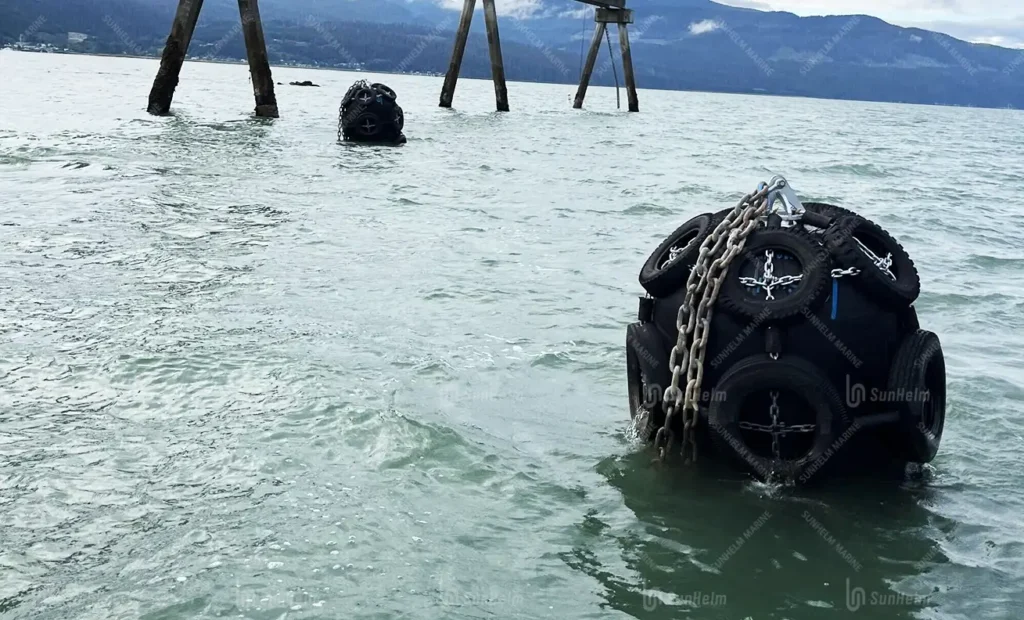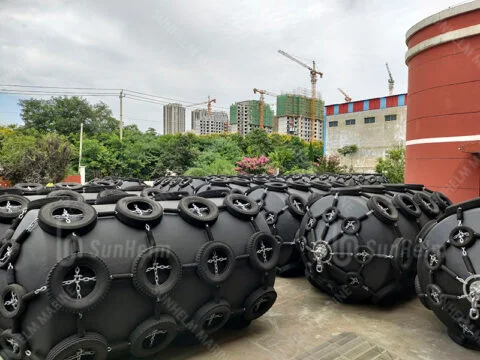In simple terms, it’s named after Yokohama Rubber Company, the first to develop and popularize pneumatic ship fenders in 1958. Their rubber-and-air design revolutionized maritime docking, and the name stuck—“Yokohama fender” became synonymous with pneumatic or floating fenders.
Why This Yokohama Fender Matters Now
Docking safety is more urgent than ever. Larger cargo ships and eco-sensitive ports demand fenders that absorb extreme energy with minimal vessel impact. For instance, we recently saw a dramatic quay collision in Sydney—traditional solid fenders cracked, while pneumatic ones held firm. If your fleet hasn’t upgraded yet, you risk costly repairs or environmental damage. At Sunhelm, we believe marine professionals shouldn’t wait to modernize.
Featured Snippet
What is a Yokohama Fender?
A Yokohama fender is an air‑filled (pneumatic) rubber buffer, originally developed by Yokohama Rubber in 1958. It floats, cushions high‑energy berthings, reduces vessel reaction forces, and is often used in ship-to-ship (STS) or berth operations.
Why is it called “Yokohama”?
Yokohama Rubber Company invented and patented the first pneumatic ship‑fender, blending their tire and aircraft‑fuel‑tank rubber expertise to create a revolutionary floating buffer.

Wondering how pneumatic fenders differ from regular marine fenders? Or which ship fenders best protect your vessels and wharfs? Curious where to find pneumatic fenders for sale—and why “Yokohama” plays such a crucial role? Read on 👇
Deep Dive: The Origin Story
- From whale carcasses to rubber tubes – After WWII, Japanese ports used whale skins as primitive buffers, which worked but were smelly and inconsistent. The need for something better led to factory-made alternatives.
- Yokohama Rubber steps in – Leveraging tire and fuel-tank rubber expertise, Yokohama created the first air‑filled cylindrical fender in 1958. These “pneumatic fenders” used air pressure inside tough rubber to absorb docking impacts effectively and affordably.
- Global adoption & ISO standard – As these fenders proved durable, lightweight, and easy to install, ISO created standards like ISO 17357 to guide their design. Now, they’re used in ship-to-ship operations, LNG terminals, and major ports worldwide.
Who Needs a Pneumatic (Yokohama) Fender?
- Ship-to-ship operations – Safety-critical transfers between tankers.
- Ports & terminals – Ideal for berths handling large vessels, especially under tidal variations.
- Offshore platforms – Floating platforms need gentle, flexible protection.
- Military vessels & yachts – Sensitive equipment requires low reaction forces.
Sunhelm Advantage: Your Ideal Fender Partner
At Sunhelm, we specialize in premium pneumatic fenders, marine fenders, and ship fenders, offering:
- ISO-certified quality (ISO 17357:2014).
- Sizes from 0.5 m to 4.7 m diameter; pressures at 50 kPa or 80 kPa.
- Durable tire nets, chains, or sling-style fittings.
- Folded shipping for cost-effective transport.
- Expert tech support and long-term maintenance.
We make it easy—contact us to get pneumatic fenders for sale that match your port or vessel needs.
Yokohama Fender FAQ
- What are Yokohama fenders used for?
For absorbing impact in berthing and ship-to-ship docking—ideal for large or sensitive vessels. - How are pneumatic fenders different from foam or solid fenders?
They float, offer linear low reaction forces, and absorb high-energy impacts more effectively. - Why choose a pneumatic fender over a traditional marine fender?
Lightweight, reusable, adaptable to tides, and gentle on hulls. - Where can I buy pneumatic Yokohama fenders?
Sunhelm offers ISO-compliant marine pneumatic fenders, custom sizes, and comprehensive technical support. - What sizes of Yokohama pneumatic fenders are available?
From 500 mm to 4,700 mm diameter, lengths up to 13 m—adjustable to vessel size and docking energy.
Wrapping It Up
Sunhelm empowers you with pneumatic fenders, marine fenders, ship fenders, and pneumatic fenders for sale—rooted in the legacy of Yokohama’s original invention. Optimize your docking operations today: safer berthings, fewer damages, and long-term ROI.
Secure your port or vessel with authentic Yokohama-style pneumatic fenders—contact Sunhelm now.



1 Comment
[…] to maintain the fender’s flexibility and performance. Many pneumatic fenders, like the Yokohama type, feature a Chain-Tire-Net (CTN) system. This lattice of tires and chains provides additional […]